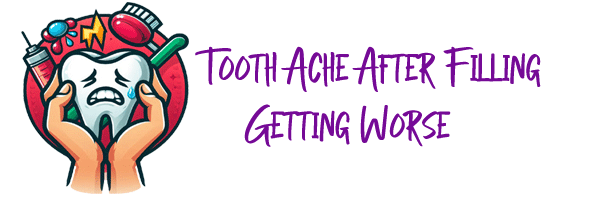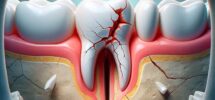Imagine your mouth as a peaceful village, where each tooth is a well-settled home, and your gums are the green fields that connect them. Now imagine a sudden storm — a cavity — tearing through this harmony like a wildfire in dry woods. In comes the dentist, the village healer, who patches the damage with a shiny new material — the dental filling — and for a moment, all seems well.

But what if the very material used to restore peace ends up becoming the source of a silent rebellion?
This is the rare, yet real, phenomenon of an allergic reaction to filling material — a condition not often seen, but when it strikes, it’s like a traitor within the walls. And it may very well be the answer when you find tooth ache after filling getting worse, even though everything “seems” fine.
Not Just a Tooth, But a Trigger
Fillings are usually made from a mix of metals (like silver, tin, copper, mercury in amalgam) or composite resins. While generally safe, some individuals have immune systems that treat these materials as foreign invaders. The result? A hypersensitive reaction — not unlike how someone might react to pollen, peanuts, or bee stings.

It’s like planting a foreign tree in your backyard — one that your soil quietly rejects. It may look fine from afar, but deep underneath, the roots are in protest.
The Puzzling Pain
In such cases, the discomfort doesn’t end with the filling — it begins. While most people expect relief after a dental procedure, you might notice that your tooth ache after filling getting worse with each passing day. The ache isn’t just due to the drilled nerve or pressure adjustment — it’s your body’s way of waving a red flag.
The pain might come with swelling, redness in nearby gums, burning sensations, or a metallic taste. But inside, it’s as if your body is saying: “This doesn’t belong here.”
When the Body Speaks Through Pain
Just like a violin string slightly out of tune can make the entire melody sound off, a small allergic reaction can throw the entire oral balance into chaos. The pain may radiate beyond the filled tooth, making diagnosis tricky. This is why many find themselves returning to the dentist, confused and frustrated: “Why is my tooth ache after filling getting worse instead of better?”
It’s because your mouth isn’t just reacting — it’s rejecting.
The Silent Saboteur: Nickel, Mercury, and Resins
Nickel, a common allergen, is sometimes present in metal fillings. Mercury, although stabilized in amalgams, can also be problematic for sensitive individuals. Composite resins, praised for aesthetics, may contain BPA derivatives or methacrylates — another potential trigger.
And in this microscopic battlefield, where antibodies meet alloys, your tooth suffers the consequences.
Thankfully, there’s a path to resolution. If an allergic reaction is suspected, your dentist can remove the existing filling and replace it with a biocompatible material. Testing may be recommended, such as a patch test to identify the specific allergen. Once the offending element is removed, the symptoms usually resolve — and the toothache that once worsened begins to fade.
When we seek healing, we expect comfort — not conflict. But in rare cases, the remedy becomes the irritant. So, if your tooth ache after filling getting worse, and nothing seems to explain the pain, consider the unseen — an allergic reaction to the very material meant to help.
Because sometimes, even the smallest thing out of place can echo loudly in the body’s delicate symphony.


